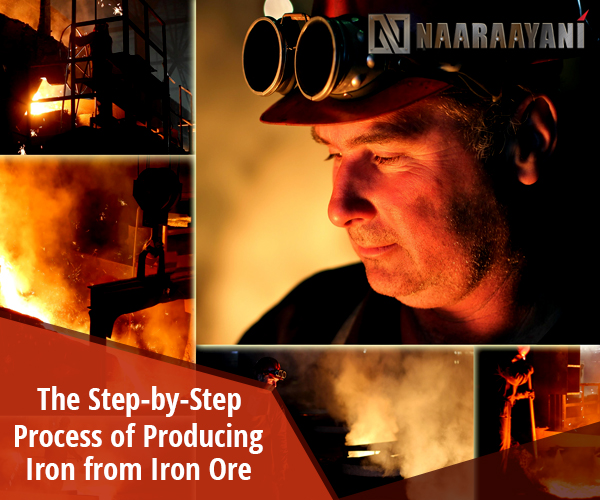
Some 3000-4000 years ago, the ancient Egyptians derived iron from the fallen meteorites (or so they say), carved them and made tools and equipment besides jewelry.
We have come a long way since then. Now, first of all, pure iron is rarely available (except if one or two meteorites crash). It has to be derived from iron ore that occurs near the surface when mining. Then the iron derived after a long processing in the blast furnace is handed over to the iron and steel industry to make a huge amount of useful materials. Most of the iron, however, is used in the construction industry. In fact, the entire construction sector is highly dependent on the Iron & Steel Industry for their regular supply of processed iron, while they, in turn, depend on some reliable iron ore trading company in India for their supplies.
Now, let us turn to the step-by-step procedure of producing iron from its ore:
Pig Iron-
Pure iron is unavailable as mentioned earlier. What you are most likely to get is a good supply of iron ore that can be converted into pig iron in a blast furnace. Generally, pig iron has a composition of 92-94% iron and the rest carbon along with other minerals. The pig iron itself does not have much use but it finds a great number of applications when converted into steel alloys in the steel industry. The process of manufacturing pig iron is a bit complicated.
The following steps explain the same as simply as possible.
Raw Materials-
The raw materials used in the blast furnace to produce high-quality pig iron are iron-ore, coke, limestone, and sinter. Now, these iron ores are nothing but oxides of iron that contains other materials like limonite, magnetite, hematite and etc. So, you see how difficult it is to derive the pig iron from such a complex conglomerate of rocks and minerals? Let us get down to the main process now.
The Blast Furnace-
This is a tower-like structure of steel lined with refractory bricks. The raw materials mix or “charge” enters the furnace from the top and hot air is blown or blasted from the bottom causing the coke to burn and the oxygen to combine with carbon in the coke to form carbon monoxide. Now, this carbon monoxide that is unstable, reacts with the ore to form carbon dioxide and iron.
The Separation Of Iron-
The molten iron that settles down at the bottom of the furnace contains impurities and rocks that combine with the limestone to create slag. This slag, being lighter, floats above the iron and is separated easily. Thus, the high-quality pig iron is obtained.
What Happens To The Gases?
The hot gases that are produced during the process are drawn away from the top of the furnace and subjected to a gas cleaning plant. There they are cleaned and sent back to the furnace for the other chemical reactions.
What Happens To The By-Products?
Most of the byproducts like the slag and scrap iron are recycled and used for a variety of purposes like the production of photographic chemicals, phenol, cutting oils, antiseptics and more.
The iron manufacturing factories out there thus require a regular supply of ore to maintain their revenue. If you are one of them, looking for an iron ore trading company in India, then you have to choose one based on its experience, reputation and reliability. So, make the best of available opportunities and raise your profit margins.

As regards raw materials we also need dolomite. Depending upon composition of of ore we calso add Manganese, silica in the form of quartz or BHQ(Banded Hematite Quartzite). Coke is the fuel used for melting of ores. Major use of B/F slag is in cement industry where 50% clinker and 50% slag are mixed and ground to produce slag cement. The gases are also used to preheat ore in the glendons
NICE ONE
Nice